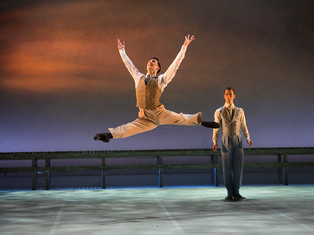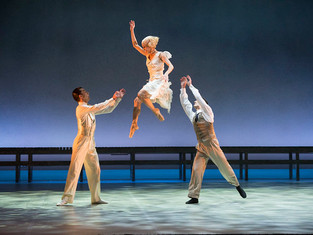The Great Gatsby
- Robert Beale
- May 9, 2019
- 3 min read
Updated: Dec 19, 2022
David Nixon, after F Scott Fitzgerald
Northern Ballet
The Lowry (Lyric Theatre), Salford
8 May 2019 – 11 May 2019; 2hr 20min inc 20min interval


One of the most successful story ballets of his whole tenure as Northern Ballet’s artistic director, David Nixon’s The Great Gatsby comes roaring into The Lowry, several years after its first creation, and provides great entertainment.
The centerpieces of it are a set of party scenes from the America of the Twenties, non-stop in energetic commitment from the tireless Norther Ballet dancers and brilliantly choreographed to include and transform dance styles of the time into big ensemble numbers of constant imagination and considerable balletic challenge.
Nixon is helped in this by a score deftly compiled from the works of Sir Richard Rodney Bennett, whose music fits the period and the atmosphere perfectly. Never mind that you first heard it as Poirot and the Orient Express picked up speed, the waltz that opens Gatsby’s big party is a perfect fit – and it’s succeeded by a setting of Johnson and Mack’s Charleston that seems to go on all night long, in a wonderful arrangement by Gavin Sutherland.
So the music itself is one of the greatest attractions of the ballet, and Nixon’s dance language complements it, not only in the stage-filled scenes but in a variety of intimate pas de deux and trois that tell the story of the infidelities and unfulfilled longings of the post-First-World War generation, where (for some) success came easy and life was to be lived to the full, little suspecting the fragility of their world.
Fitzgerald’s novel is, like most of the genre, filled with characters and built with twists and turns in its plotline. David Nixon makes a brave attempt at summarising most of them, with a prologue to outline the back story and a rapid succession of mini-scenes before we get to the parties, where the dancing really starts (though his narrative ends with the shot when cuckolded George kills Gatsby in mistaken revenge – by that point the detail of mistaken identity and car keys has got too complicated for any silent mime to explicate).
Nixon puts the narrator figure, Nick, on stage, and, unless you knew the plot pretty well to begin with, it’s quite hard at first to follow who’s who and where their relationships are going. He also interprets some of their inner psychology in eloquent dance – again, OK if you’ve read the book first, but not necessarily meaningful if you haven’t.
But in a way that hardly matters: it’s the flappers and the smart guys, the superficiality and the hedonism, the search for love and the final tragic accidents, that really tell the story.
There are rich opportunities for the leading dancers to show what they can do – particularly Ashley Dixon as Jay Gatsby and Antoinette Brooks-Daw as Daisy. Dixon has some amazing lifts to perform in their pas de deux, and Brooks-Daw seems to be on stage for virtually the entire show. Pippa Moore also makes a characterful contribution as Jordan Baker, showing off her golf swing on every occasion in the early part of the ballet to establish her identity.
The Northern Ballet Sinfonia was conducted by John Pryce-Jones, making one of his final appearances with the company after a quarter-century as music director. That is quite an achievement, and the compilation of the music for The Great Gatsby is one of the best legacies he’s given to us.






